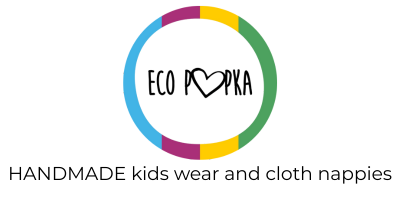A Comprehensive Guide for Parents.
Considering making the switch to cloth nappies? Whether you're motivated by environmental concerns, the potential cost savings, or the desire to use more natural products on your baby’s delicate skin, reusable nappies are a fantastic choice. However, getting started can feel a bit daunting. With so many options, materials, and techniques, where do you begin? This guide will walk you through everything you need to know on how to start with cloth nappies, ensuring a smooth transition for you and your baby.
Why Choose Cloth Nappies?
Before diving into the practical aspects, it’s helpful to understand the benefits of reusable nappies. These include:
-
Environmental Impact: Disposable nappies are a significant contributor to landfill waste, taking hundreds of years to decompose. Cloth nappies can be reused multiple times, dramatically reducing waste.
-
Cost Savings: While the initial investment in cloth nappies can seem high, they are far more cost-effective in the long run. Depending on the type and brand, you could save hundreds of pounds over the nappy-wearing years.
-
Health Benefits: Cloth nappies are typically made from natural materials like cotton, bamboo, or hemp, which are gentler on your baby’s skin. This can reduce the risk of nappy rash and other skin irritations.
-
Customisation: With a wide range of styles, sizes, and materials available, cloth nappies offer a customised fit for your baby, which can also help with early potty training as your baby becomes more aware of wetness.
Now that you know why cloth nappies are an excellent choice, let’s explore how to start using them.
Step 1: Understand the Different Types of Reusable Nappies
There are several types of cloth nappies, each with its own advantages and disadvantages. Here’s a brief overview:
-
All-in-One (AIO) Nappies: These are the most convenient and user-friendly option, with the absorbent layer and waterproof cover sewn together. They go on just like a disposable nappy, making them a great choice for beginners.
-
Pocket Nappies: These have a waterproof outer layer and a pocket inside where you insert absorbent pads. They’re versatile and dry quickly, but require some assembly before use.
-
Two-Part Systems: This system involves a separate absorbent nappy (like a prefold or fitted nappy) and a waterproof cover. Though more cumbersome, they are highly absorbent and particularly useful for overnight use.
- Pre-flats: A newer option, pre-flats are a blend of flats and pre-folds. They are made from absorbent fabric and require folding, but they are simpler and more form-fitting than flats. They are usually paired with a waterproof wrap or cover.
- Flats and Pre-folds: Flats are large squares of fabric that need to be folded and pinned or fastened around your baby, while pre-folds are smaller and more manageable, though still require a cover. These are the most economical but require a bit more effort.
Step 2: Choose the Right Size
Sizing is crucial for preventing leaks and ensuring your baby is comfortable. Cloth nappies come in various sizes or adjustable one-size-fits-most options that grow with your baby. It’s essential to follow the manufacturer’s sizing guidelines, which usually consider your baby’s weight.
For newborn, consider starting with a smaller size or a specific newborn nappy, as one-size nappies can be bulky on tiny babies. As your baby grows, you can transition to the adjustable options.
Step 3: Build Your Stash
Begin with a small stash, perhaps 10-15 nappies, to test different styles and brands before fully committing to a larger investment.
When building your stash, it’s helpful to try a few different types and brands to see what works best for your baby. Consider buying a mix of all-in-ones, pocket nappies, and two-part systems to get a feel for each style.
Step 4: Get the Essential Accessories
Along with your nappies, you’ll need a few accessories to make cloth nappying easier:
- Nappy Liners: These sit inside the nappy and catch solids, making clean-up easier. They come in both disposable and reusable options.
- Wet Bags: Waterproof bags for storing used nappies when you’re out and about. They keep moisture and odours contained until you can get home to wash them.
- Nappy Pail: A lidded container to store soiled nappies at home. You can use a dry pail (no water) or a wet pail (soaking nappies in water).
- Detergent: Choose a detergent that’s free from additives, fragrances, and brighteners, which can build up on nappies and reduce their absorbency
Step 5: Establish a Washing Routine
One of the biggest concerns for parents new to cloth nappies is washing them. However, with a solid routine, it becomes second nature. Here’s a basic washing routine:
-
Pre-Wash: Run a cold rinse or short wash cycle without detergent to prepare the nappies for a thorough clean.
-
Main Wash: Use a long, hot wash cycle (40-60°C) with a suitable detergent. Ensure your washing machine is not overloaded to allow nappies to move freely and get thoroughly cleaned.
-
Dry: Air-drying is best for cloth nappies as it prolongs their lifespan. You can tumble dry on low heat if necessary, but avoid high heat as it can damage the elastic and waterproof layers.
Step 6: Practice Patience and Flexibility
There’s a learning curve with cloth nappies, and it’s perfectly normal to feel a bit unsure at first. Give yourself time to adjust and be prepared for a little trial and error. You may find that certain nappies work better for your baby at different stages, or that you prefer different styles for day versus night.
If you encounter any issues like leaks or fit problems, don’t hesitate to reach out to online communities or local groups for advice. Many parents have been in your shoes and can offer valuable tips and encouragement.
Step 7: Consider the Long-Term Benefits
While the initial investment and effort might seem considerable, remember the long-term benefits of using reusable nappies. Not only are you making a positive impact on the environment, but you’re also choosing a healthier option for your baby and potentially saving a significant amount of money over time.
Moreover, using cloth nappies can become second nature with time, and many parents find great satisfaction in knowing they’re contributing to a more sustainable future for their children.
Final Thoughts
Starting with cloth nappies may feel overwhelming at first, but by following these steps, you can ease into the process and find what works best for you and your baby. Remember, the key is to start small, experiment with different types, and establish a routine that fits your lifestyle.
With patience and persistence, you’ll soon discover the many rewards of using reusable nappies, from the environmental benefits to the potential cost savings and the comfort of knowing you’re providing the best care for your baby’s skin. Embrace the journey, and enjoy the peace of mind that comes with making a positive, sustainable choice.

